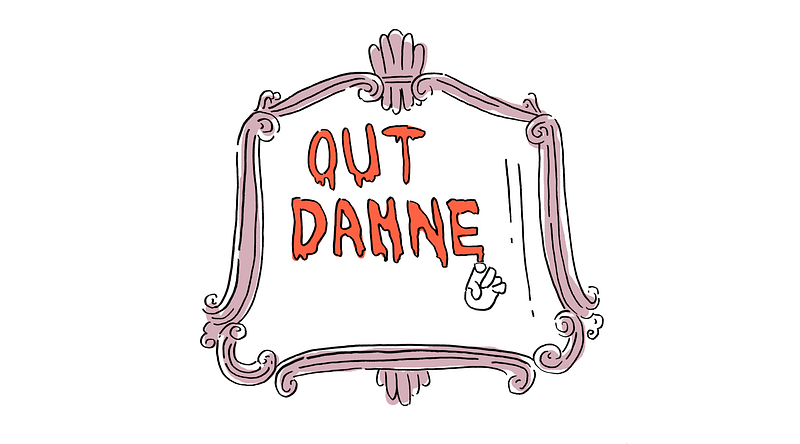Last week, Ken Eklund and myself submitted our proposal for the 2016 Knight News Challenge which asks, How might libraries serve 21st century information needs?
Our answer is this: The Library Starter Deck: a 21st-century game engine and design studio for libraries. We also have shared a brief on some of the inspirations behind our proposal (pdf).
Two years ago I reviewed the 680+ applications to the 2014 Knight News Challenge for Libraries entries and shared some of my favourites. It was, and it is still a very useful exercise because there are not many opportunities to read grant applications (if you are not the one handing out the grant) and this particular set offer applications from both professionals and those from the public.
You can also review the entries as an act of finding signals of the future, as the IFTF might put it. That's what I've chosen to do for this year's review. What this means is that I've chosen not to highlight here what I think are the best or most deserving to win applications (that's up to these good people) but instead, I made note of the applications that, for lack of a better word, surprised me:
- Digital Book Intellectual Property Rights that Make Sense for the 21st Century: By partnering with libraries, we are creating a collection of high-quality ebooks with the IP rights needed for a global digital world.
- Finding Hidden Histories in African American (Digital) Archives: Pairing artists, writers, and students with African American archives to inspire new works and find materials that may be shared online.
- Rap Research Lab: Mining the Archive: Using the Hip-hop Word Count database to re-contextualize the library collection for Hip Hop relevance.
- KCResearch: Educate, Inform, Engage: KCPL will curate a reference-based, online portal bringing all points of view, comparative info and studies to important community issues.
- Future-Proofing Civic Data: We'll explore ways libraries can support preservation & long-term access to Open Civic Data from community portals like OpenDataPhilly.
- Building DALE – the Data Analyzation Library Explorer: The Charlotte Mecklenburg Library will create a digital librarian as the first AI enabled search portal within a public library setting
- Councilmatic - action alerts for local library issues in city governments: Councilmatic and a national librarians network will demystify the process of funding and budget process for libraries in city governments.
- National Novel Writing Month and Come Write In: Building Hybrid Digital-Physical Creative Communities: Come Write In provides programmatic resources, promotional materials, and collaborative tools to help libraries build robust communities.
- Adaequatio: art and libraries to improve the capacity to know: By turning library spaces into art spaces, this project will increase the sensibility that promotes a library patron's capacity to learn.
- Evolving the Book in the Browser (Using Semantic Web technologies and HTML5): Reworking HTML to create indexable, archival book objects to establish the library as publisher and the library in the life of the reader.
- Read/Write Library: Open Source Tools for Libraries to Replace Community Outreach with Community Ownership: Adaptable digital and IRL tools that help libraries meet communities’ needs for collections that reflect their lived experience.
- Library-to-Jail Video Visitation: Connecting Children to Incarcerated Parents: Connect children and families with their incarcerated loved ones through free, easily accessible community-based video visitation services.
- Sharing Rare Materials: Building a Participatory Community Around Archival and Special Collections on Social Media and the Semantic Web: Give librarians, archivists, museum professionals, scholars, Web developers, and the public a platform to collaboratively expand access
- Collaborative Libraries: P2P knowledge sharing by allowing the public to take on various roles as librarians using Zotero to create reading playlists.
- Building community resilience: local libraries as online/offline crisis hubs: Demonstrating the potential of local libraries to provide critical information and digital access in times of crisis and disaster.
- The Phantom Databooth: The Phantom Databooth creates mobile data experiences for library users to empower a more data conscious citizenry.
- The Database: Big Data to Support Libraries: To develop a shareable, data enriched, and well-segmented national database of library supporters, allies, organizations and advocates.
- Archiving and Disseminating Scientific Maker Projects: We propose to develop and pilot documentation standards for curating and disseminating scientific projects using open-source “maker” tech.
- MUSICat: Open-Source Software for Libraries to Create Digital Collections of Local Music: We build software that empowers libraries to license local music and share it with their communities via streaming and downloads.
- The Reading List for Life: Reading List for Life is a simple online tool that will help adult library users create and customize reading lists for continued learning.
- Free Library of Philadelphia Cultureshare: Redefining the delivery of library content, one inbox at a time.
- One Book 2.0: We seek to upgrade our One Book program with mobile technologies that will fulfill the promise of stronger civic ties through culture.
- The Time Browser Project: The Time Browser Project enlivens our record of past events and interactions, turning them into immersive flexible compelling experiences.
I'd like to add there are many other deserving submissions that I have given a 'heart' to on the Knight News Challenge website and if you are able to, I'd encourage you to do the same.





